Driving safely requires diligence and focus on both the road and what is happening around you. There are plenty of distractions that can come with being a driver, but it is vital that you pay attention to the task at hand rather than anything else. This is because distracted driving is associated with many significant dangers and can often cause devastating accidents. Not only does this act endanger the safety of the person who chooses to drive while distracted, but it’s also incredibly hazardous to those around them.
Distracted Driving Resulting in Personal Injuries
Various studies and tests have proven that driving without paying full attention to the road can increase the risk of an accident and, as a result, cause severe injuries. If you’ve been injured in a collision where the other driver was not focusing on the road, an experienced distracted driving accident lawyer can help you understand your rights and possible next steps. This might include filing a lawsuit to secure fair compensation for your injuries. Our personal injury lawyers are here to help and make your recovery from one of these incidents less stressful.
Defining Distracted Driving Laws and Their Penalties
Most often, cell phones are to blame for distracted driving in Ontario. Whether dialing to make a call or trying to send a quick text, the split second that a driver’s focus is not on the road can result in a collision. As this offence grew to become a major problem, the Ontario government revised existing distracted driving laws in 2015 to carry harsher consequences to further deter drivers from picking up their phones while behind the wheel.
The Three Strike System
Ontario operates an escalating “three strike” system in many instances of negligent or illegal driving behaviour. Each time a driver is pulled over for an offence, the repercussions increase in an effort to stop them from continued unsafe decisions.
- A first convicted offence for distracted driving will cost up to $1,000, a licence suspension of three days, and three demerit points.
- This point system is used as a measurement to discourage drivers from poor habits, and at 15 points, your permit to drive is automatically suspended for 30 days.
- A second offence will increase the fine up to $2,000, tack on six demerit points, and result in the loss of the driver’s license for a week.
- Finally, upon a third or subsequent conviction of distracted driving, the offender will likely be required to pay a fine of $3,000. Another six demerit points will be added to their license, and regardless of how many points they’ve accumulated, they will lose it for 30 days.1
All of these laws are made to ensure that distracted driving is taken seriously, and these penalties pale in comparison to the life-altering outcomes that could result from this irresponsible act.
Distracted Driving vs. Drunk Driving
Distracted driving has been equated with being as dangerous as driving while under the influence of drugs or alcohol.2
Some studies have compared a driver’s texting through an obstacle course to one who had above the legal blood-alcohol limit.
In these cases, drivers were more likely to get into an accident than someone sober and paying attention to the road.
Drunk driving can have serious legal consequences, such as losing a driver’s licence and criminal charges. Although distracted driving without causing an accident doesn’t carry as many potential ramifications, law enforcement is beginning to crack down on drivers they notice using mobile devices while their cars are in motion. Laws in Ontario allow courts to impose greater fines on distracted drivers, and law enforcement officers prioritize imposing these laws.
Potential Causes of Distracted Driving
As highlighted above, cell phones are one of the top causes of distracted driving. Provincial laws state that using your phone when driving, even when stopped at a light or in bumper-to-bumper traffic, is unacceptable. Many believe their attention will only be drawn away for a quick moment, but even a split second can make all the difference in a collision.
Many other factors can be distracting while behind the wheel that don’t involve a handheld device. In Ontario, distracted driving is an umbrella term defined as doing anything while driving that could take your attention away from the road. For example:
- A conversation with the person in the passenger or back seat can pull your attention off the road.
- Trying to switch radio stations, pick a song, or change the volume on your radio can also be very distracting.
- Eating while driving or flipping down the mirror to check your appearance may be convenient, but again, your focus will not be on the road.
While offenders can’t be charged for distracted driving in these scenarios, they could be charged with careless or dangerous driving if they have caused an accident.
Understanding the Dangers of Distracted Driving
Distracted drivers are more likely to cause an accident or near-crash3 which endangers their safety and other cars around them because they are unwilling to dedicate their full attention to driving. This means they could collide with other vehicles at higher speeds, enter intersections when they don’t have the right of way, or suddenly cross into opposing lanes.
This growing problem has become heightened throughout the past decade. Statistics from Transport Canada’s National Collision Database highlighted that in 2016, distracted driving caused 21% of fatal car accidents and more than a quarter of vehicular accidents that sent people to the hospital with serious injuries.
Recovering from an Accident Caused by Distracted Driving
If you’ve been the victim of a distracted driving accident in Ontario, you may be unsure of what to do next. Perhaps you have suffered an ongoing whiplash injury that doesn’t seem to recuperate. Depending on how you were hit, your spinal cord or brain functionality could have been affected, causing rippling symptoms throughout your body that can be challenging to deal with. Speed could also play a factor in your injuries, resulting in a broken bone or ongoing soft tissue problems.
Working with an Experienced and Compassionate Legal Team
The trauma from the incident could be difficult to bear on your own, and you may also suffer financially because you cannot return to work. In some cases, you may try to push through the pain and further cause yourself harm because you aren’t sure about your options. Our experienced accident lawyers can offer you compassionate advice on all of your options. This can include the opportunity to file a lawsuit to regain your lost wages, pay medical bills, and help you live in a way similar to how you once did.
Additionally, we can review the potential for a civil suit that accounts for your pain and suffering, which are considered intangible consequences of the accident. When determining the value of pain and suffering, changes to your quality of life and the amount of trauma you’ve experienced in your accident are some things a court might consider. At Bergeron Clifford, we can secure the compensation you deserve so that you don’t have to worry about the fiscal burdens of your injury.
Dedicated to Helping Clients
Distracted driving in Ontario is sadly a continued problem. We take the time to listen to our clients and hear their stories. With our expertise, we have helped these victims receive the funds they need to recover and live as fully as possible. Depressing thoughts or feelings should not impede your journey to recovery or lower your quality of life. Our team will work with you to understand the specific conditions you experienced and put forth a case demonstrating the profound effect of your circumstances. Reach out to us to learn more.
Frequently Asked Questions
Proving distraction in such cases can indeed be complex, and we are here to help secure evidence to ensure you receive fair compensation as a victim in the accident. Some strategies we focus on include, but are not limited to:
- Seeking witnesses of the accident and obtaining their statements regarding the moments leading up to the accident.
- Requesting the driver’s phone record to establish whether they were on a call or texting at the time of the accident.
- Checking surveillance cameras if the accident occurred in a public area, as they might have footage of the collision.
However, we want to emphasize the importance of seeking legal advice sooner rather than later. The aftermath of a DUI accident can be overwhelming, and we recommend reaching out to our team as soon as possible. By doing so, you can ensure that you fully understand your rights, the legal process, and the specific timeline applicable to your case.
We recommend consulting our team before you approach the driver’s insurance company. Making decisions about communication with insurers can be overwhelming, especially following a serious collision. Your well-being is our utmost priority, and we’ll help you navigate the process. Our team will ensure your interests are protected throughout communications, avoid potential pitfalls regarding leading questions or inaccurate statements, and help you understand your rights as they relate to securing you fair compensation.
1. “Distracted Driving.” n.d. Ontario.ca. https://www.ontario.ca/page/distracted-driving#section-2.
2. Strayer, David L., Frank A. Drews, and Dennis J. Crouch. 2006. “A Comparison of the Cell Phone Driver and the Drunk Driver.” Human Factors: The Journal of the Human Factors and Ergonomics Society 48 (2): 381–91. https://doi.org/10.1518/001872006777724471.
3. Klauer, Sheila G., Feng Guo, Bruce G. Simons-Morton, Marie Claude Ouimet, Suzanne E. Lee, and Thomas A. Dingus. 2014. “Distracted Driving and Risk of Road Crashes among Novice and Experienced Drivers.” New England Journal of Medicine 370 (1): 54–59. https://doi.org/10.1056/nejmsa1204142.
Sources
1. “Distracted Driving.” n.d. Ontario.ca. https://www.ontario.ca/page/distracted-driving#section-2.
2. Strayer, David L., Frank A. Drews, and Dennis J. Crouch. 2006. “A Comparison of the Cell Phone Driver and the Drunk Driver.” Human Factors: The Journal of the Human Factors and Ergonomics Society 48 (2): 381–91. https://doi.org/10.1518/001872006777724471.
3. Klauer, Sheila G., Feng Guo, Bruce G. Simons-Morton, Marie Claude Ouimet, Suzanne E. Lee, and Thomas A. Dingus. 2014. “Distracted Driving and Risk of Road Crashes among Novice and Experienced Drivers.” New England Journal of Medicine 370 (1): 54–59. https://doi.org/10.1056/nejmsa1204142.
Related Links
- Spinal Cord Injuries
- Brain Injury and Concussions
- Amputation
- Broken Bones and Orthopedic Injuries
- Chronic Pain, Headaches and Chronic Fatigue
- Injuries to Children
- Depression and Post-Traumatic Stress Disorder
- Whiplash and Soft Tissue Injuries
- Wrongful Death
- Other Injuries and Claims
- Insurance Denials

